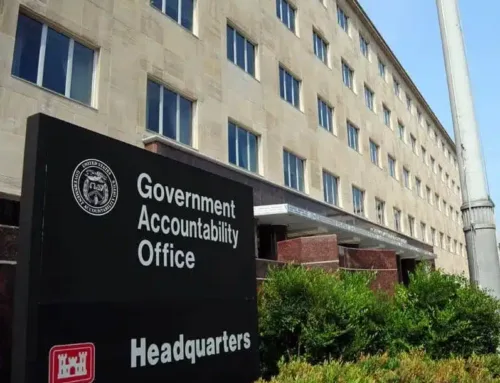A downloadable PDF is available here.
On January 25, 2017, President Trump issued an executive order that instructed the Secretary of Homeland Security to “take all appropriate steps to immediately plan, design, and construct a physical wall along the southern border … to most effectively achieve complete operational control” of the U.S.-Mexico border. While the order did not enumerate a specific mileage, the president has repeatedly indicated it would be hundreds of miles of additional physical barriers.
Over the last 30 years, the U.S. has constructed hundreds of miles of walls and fencing along the southern border. There is little evidence to support the claim that extending existing barriers to cover as much as 1,000 miles of the southern border with Mexico, as President Trump has proposed, will be a cost-effective approach to limiting illegal border crossings specifically or illegal immigration in general. In 2016, the Congressional Research Service review of the existing system of barriers noted: “Especially in light of current fiscal constraints, some Members of Congress may evaluate future border enforcement in terms of expected returns on America’s investments, and they may consider the possibility that certain additional investments at the border may be met with diminishing returns.”[1]
The U.S. has already made significant investments in physical barriers.
- There are currently 654 miles fences or walls along the 696 land miles of the southern border.[2]
- S. Customs and Border Protection (CBP) spent approximately $2.3 billion to deploy border fencing along the southwest border from fiscal year 2007 through 2015.[3]
- In 2009, CBP estimated that maintaining fencing would cost more than $1 billion over 20 years.[4]
- The border wall envisioned by the president will likely cost in excess of $20 billion to construct (more than double what President Trump has claimed), and this does not include maintenance costs.[5]
- Non-governmental estimates put the cost at more than $30 billion.[6]
There is little evidence more border walls would be effective.
- It would be extremely difficult to fence and adequately guard the entire length of the 1,969-mile U.S.-Mexico border.
- The Rio Grande River runs along 1,254 miles of the border between Mexico and the United States, where no physical barrier can be built that will disrupt the flow of the river.[7]
New barrier miles would be in ever more remote locations, and therefore more expensive to install and maintain.[8]
- CBP cannot measure the contribution of fencing to border security operations because it has not developed metrics for this assessment.[9]
The majority of unauthorized foreigners in the United States would not be stopped by physical barriers.
- The number of unauthorized foreigners here in the U.S. is heavily driven by people who overstay their visas.
- The Department of Homeland Security estimated the number of unauthorized foreigners who overstayed their visa was 739,478 in Fiscal Year 2016.[10] Nationwide, the number of apprehension of migrants who entered illegally for the same period was 415,816.
- In Fiscal Year 2016, the number of visa overstays exceeded the number of people apprehended by law enforcement by roughly 178 percent.
- Asylum seekers and unaccompanied child migrants typically enter through ports of entry and present themselves to authorities rather than look to cross at unguarded stretches of the border.
Building more physical border barriers would be chasing a problem that is already diminishing.
- In the early 1990s, apprehensions of undocumented immigrants on the southwest border numbered more than 1.1 million.[11]
- Apprehensions of undocumented immigrants, nationwide, in the same time period were just under 1.2 million.[12]
- These apprehensions were accomplished by a nationwide Border Patrol staff of 4139 employees.
- In Fiscal Year 2016, 415,816 undocumented immigrants were apprehended nationwide: about one third the number from 1992.
A physical border barrier doesn’t address these issues.
Rep. Will Hurd (R-TX) who represents a border district succinctly describes the wall as,
“3rd century technology to solve a 21st century problem”
Former DHS secretary and Arizona Gov. Janet Napolitano has said,
“Show me a 50 foot wall, and I’ll show you a 51 foot ladder.”
Conclusion: All proposals for increasing physical barriers are prohibitively expensive.
The overall budget for the Department of Homeland Security is $44 billion for Fiscal 2018. The $20-$25 billion price tag would dwarf all other DHS budget line items including the Coast Guard, the Federal Emergency Management Administration, and the Customs and Border Patrol. The cost is comparable to the entire budget of the U.S. Marine Corps and greater than the budget of more than half a dozen federal agencies, including the National Aeronautics and Space Administration, the Department of the Interior, the Department of Agriculture, and the Department of the Treasury.
And in a more direct comparison, the total Fiscal Year 2019 Pentagon request for military construction, worldwide, was roughly $8 billion. This wall, if paid for with Pentagon funds, would be more than triple the amount the Pentagon spends on its own construction projects for a year.
[1] Carla N. Argueta, Analyst in Immigration Policy, “Border Security: Immigration Enforcement Between Ports of Entry,” Congressional Research Service, 7-5700, April 19, 2016
[2] “Additional Actions Needed to Better Assess Fencing’s Contributions to Operations and Provide Guidance for Identifying Capability Gaps,” United States Government Accountability Office, Report to Congressional Requesters. February 2017. GAO-17-331
[3] Ibid., pg. 25
[4] Ibid.
[5] Julia Edwards Ainsley, “Trump border ‘wall’ to cost $21.6 billion, take over 3 years to build.” Reuters, February 9, 2017.
[6] Konstantin Kakaes, “Bad Math Props Up Trump’s Border Wall,” MIT Technology Review, October 18, 2016
[7] See International Boundary and Water Commission.
[8] Argueta, CRS, pg. 32
[9] GAO, pg. 25.
[10] “Fiscal Year 2016 Entry/Exit Overstay Report” U.S. Department of Homeland Security
[11]“Border Control: Revised Strategy Is Showing Some Positive Results,” United States General Accounting Office, December 1994. GAO/GGD-95-30
[12] Ibid.











Get Social